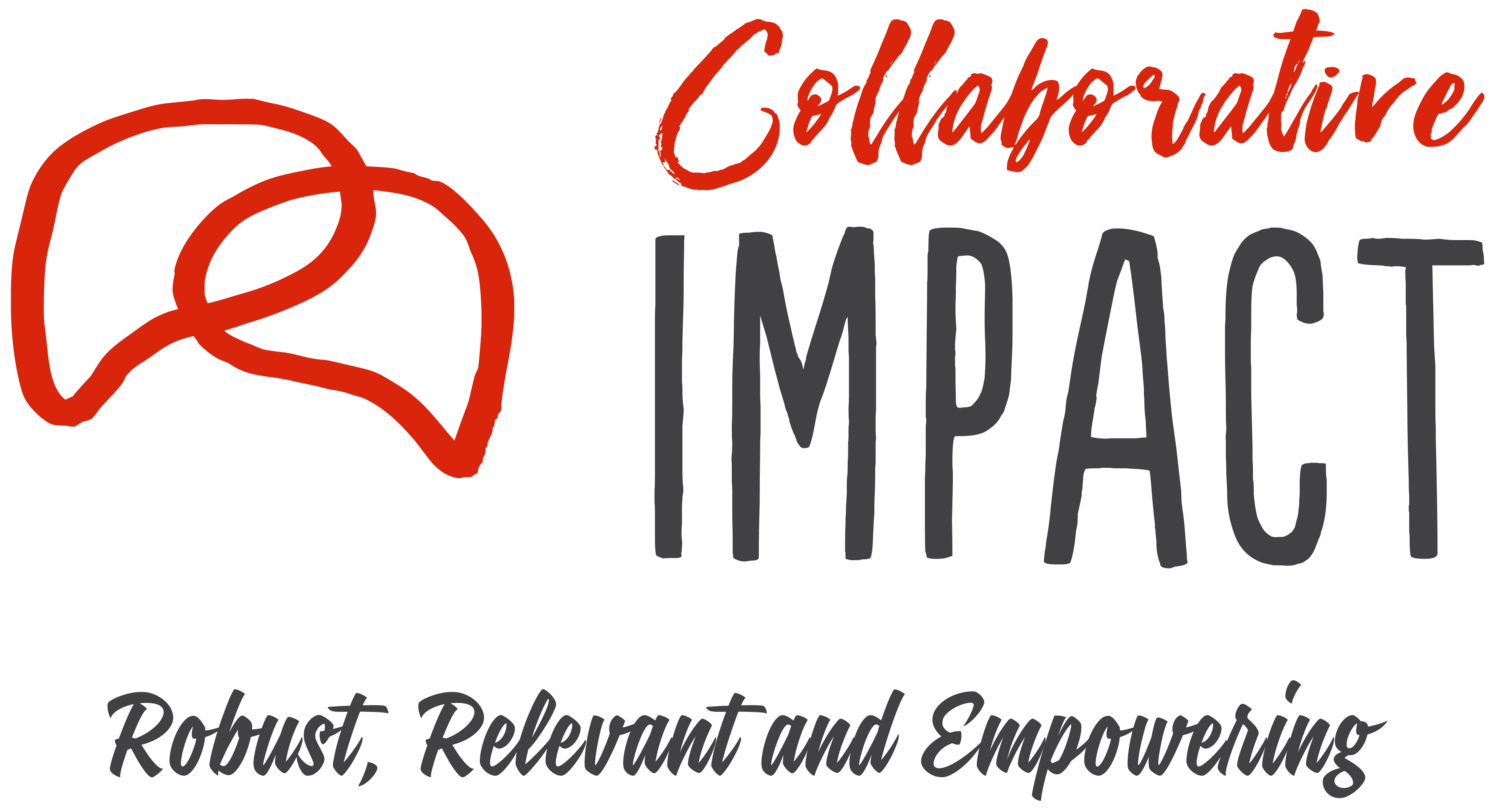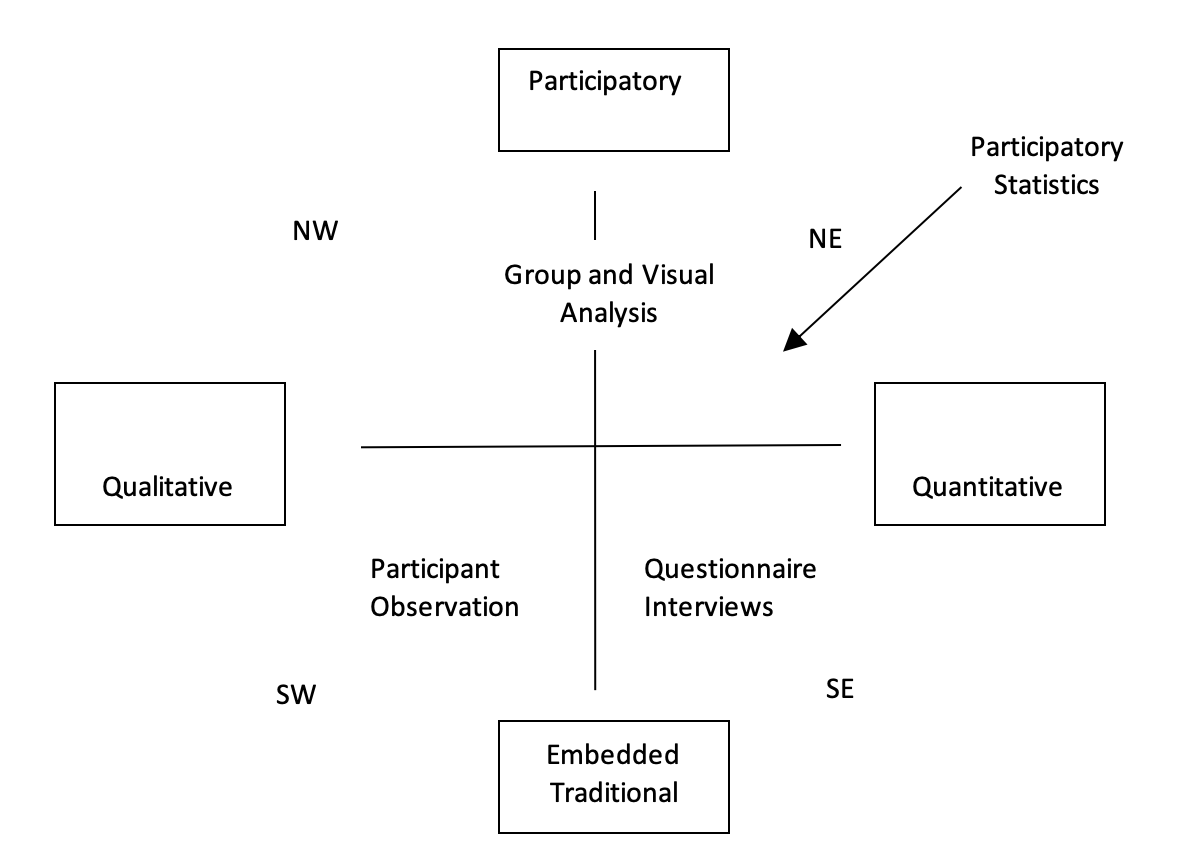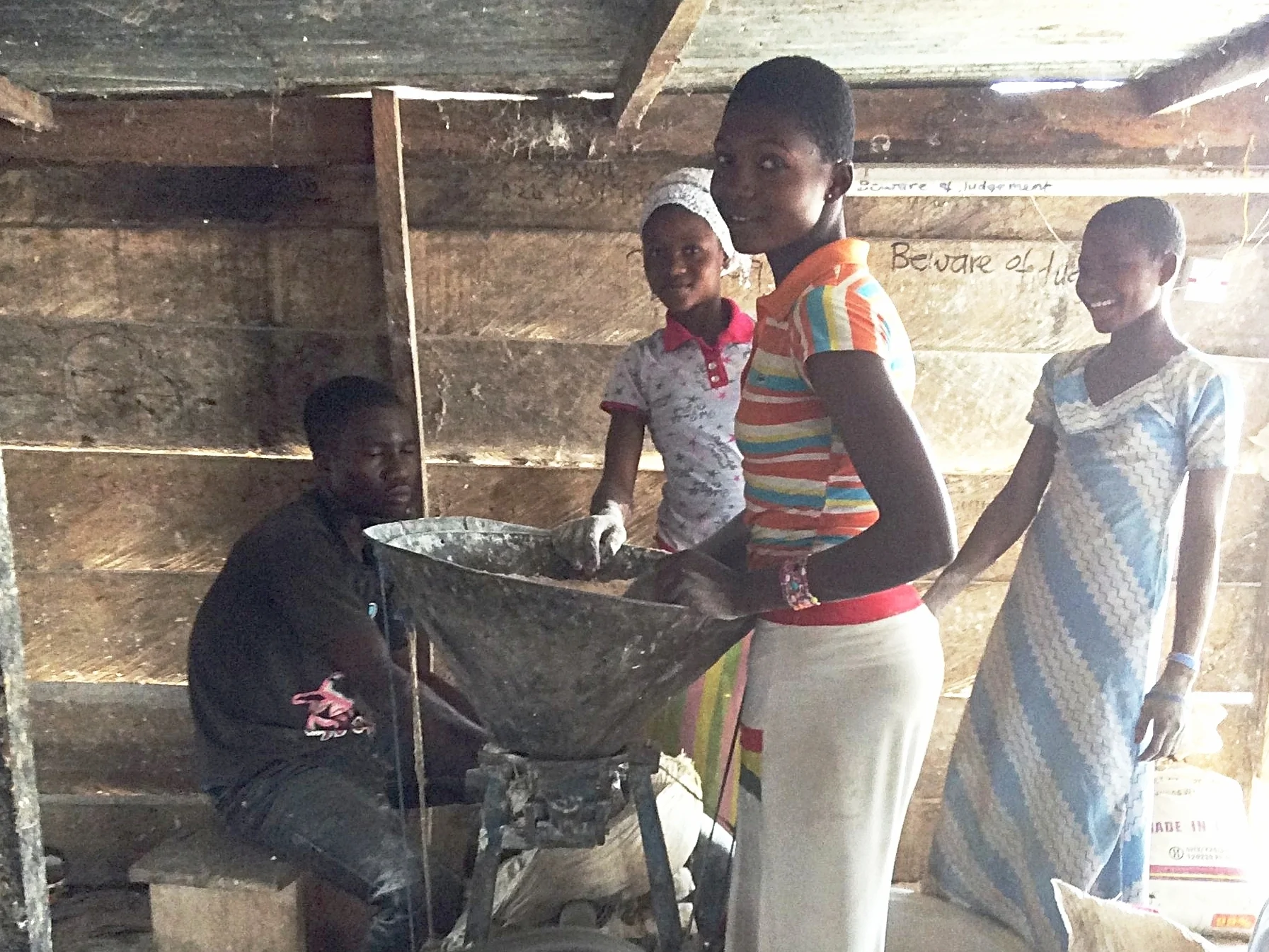Participatory Statistics
Participatory Statistics is a ‘win win’ for impactful research. Combined with a robust sampling strategy, it can efficiently generate robust and timely quantitative data, while empowering local people to learn and engage with knowledge creation.
Participatory statistics mapped . (Source: Adapted from Chambers, 2008)
In recent years Participatory Statistics has established its credentials as a powerful research approach – with an accompanying set of tools – in which local people themselves generate statistics. Since the early 1990s there has been a ‘quiet tide of innovation’ in generating statistics using participatory methods. Today development practitioners and researchers support and facilitate Participatory Statistics from the community level planning right up to sector and national level policy processes.
We use Participatory Statistics in all of our mixed-methods impact evaluations taking PIALA as an approach, but also offer it as a stand-alone service in impact-focused design, monitoring and evaluation of development interventions.
Participatory research focuses on public and collective reflection and action. At its most political, it is a process in which reflection is internalised and promotes political consciousness. By shifting people’s engagement in research from passive to active, it creates opportunities for local agency supporting empowerment. This process comes into sharp focus when utilising participatory research to generate statistics.
Local people generate statistics through group-based ‘mapping’, ‘measuring’, ‘estimating’, ‘valuing’ and ‘comparing’, and various combinations of these. They not only measure observable, tangible things but also quantify and qualify observed changes in complex processes and relationships that are otherwise difficult (if not impossible) to measure. Quantification sharpens participants’ analysis and evaluative discussion.
This is in sharp contrast with conventional research that extracts data through one-on-one surveys using predetrmined and closed questionnaires. Crucially, when participatory numbers are compiled with a large-enough and representative sample of participants in a series of focus group discussions using the method, they can be subjected to statistical analysis.
A Participatory Statistics process generally involves three steps
STEP 1 – Assembling groups of analysts. Identifies and selects participants with a shared positionality or stake in the context of the research (e.g. female beneficiaries, male market traders, community leaders) to form groups in the sampled localities.
STEP 2 – Generating impact data. Facilitates group work using similar tools and processes in all sampled localities to generate participatory numbers and explanations. This includes a process of group-visual synergy and cross-checking to ensure the data obtained is robust and trustworthy.
STEP 3 – Analysing the impact data generated. Facilitates group-based analyses of the causal factors and interactions explaining the changes observed, and of relevant patterns and trends. If done in a representative and large-enough sample, this may produce the data set for statistical analysis.






